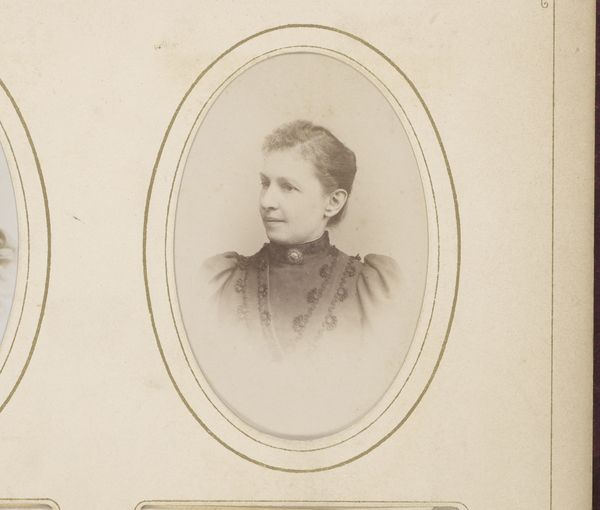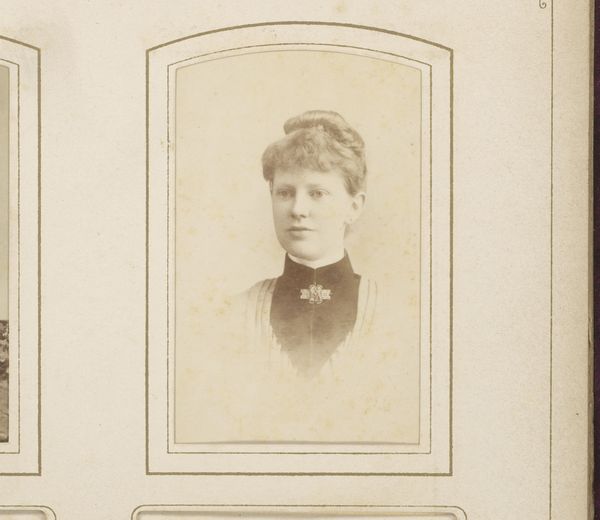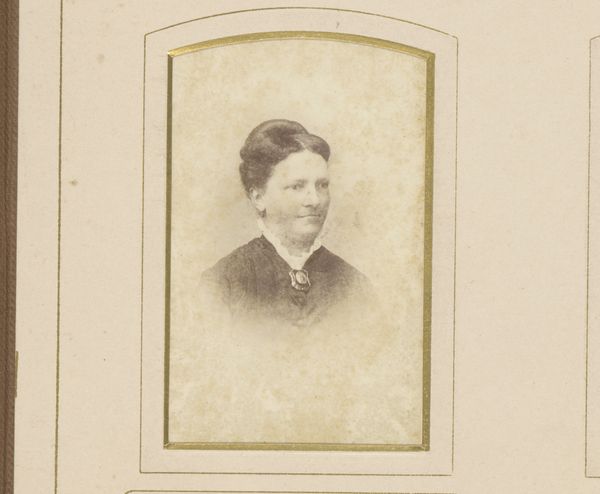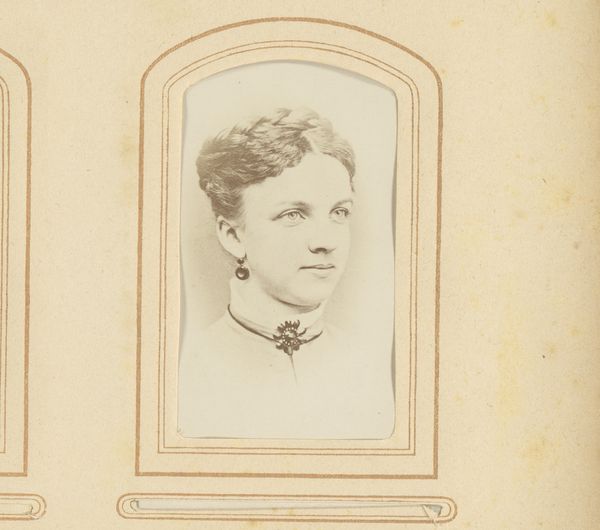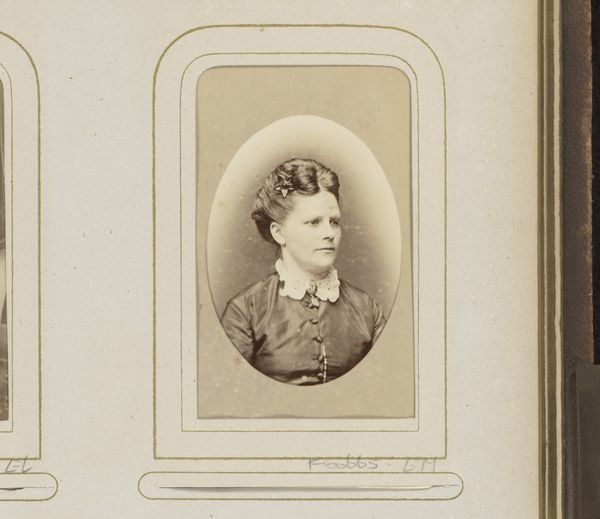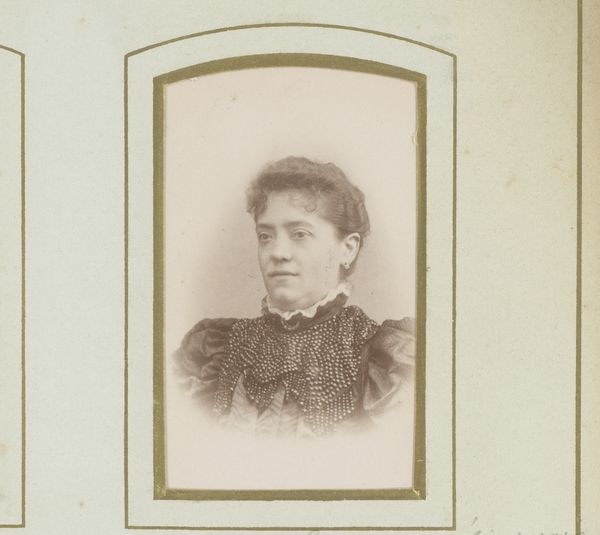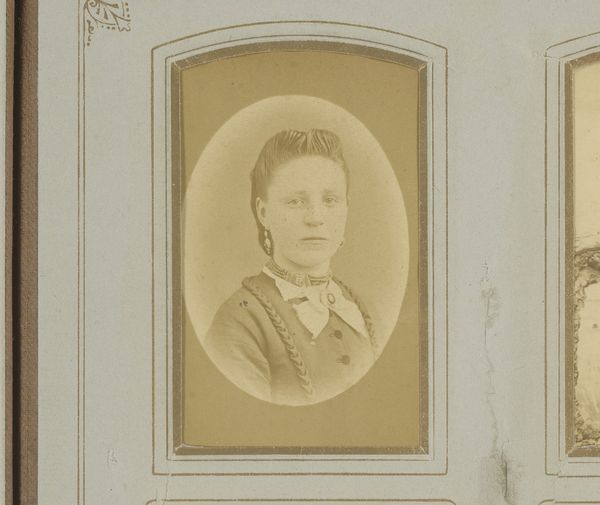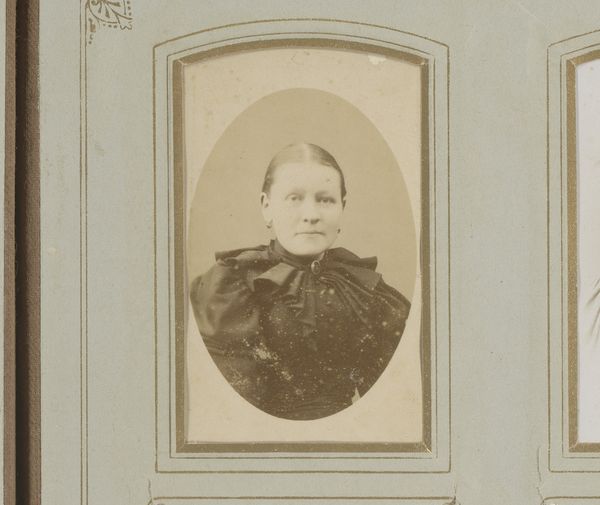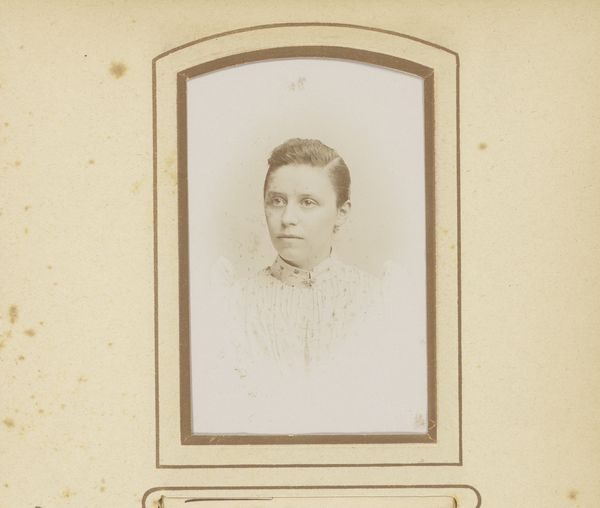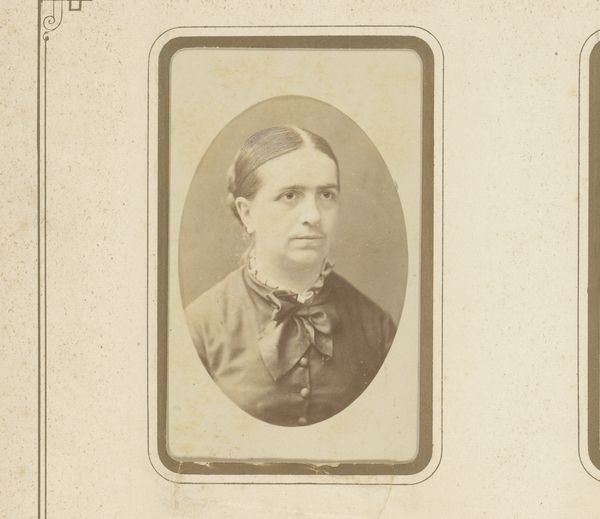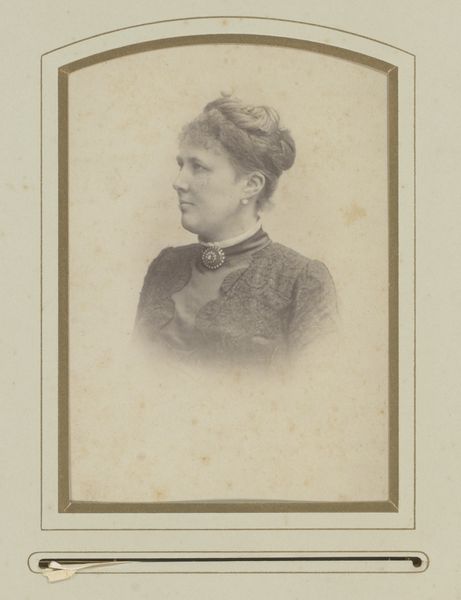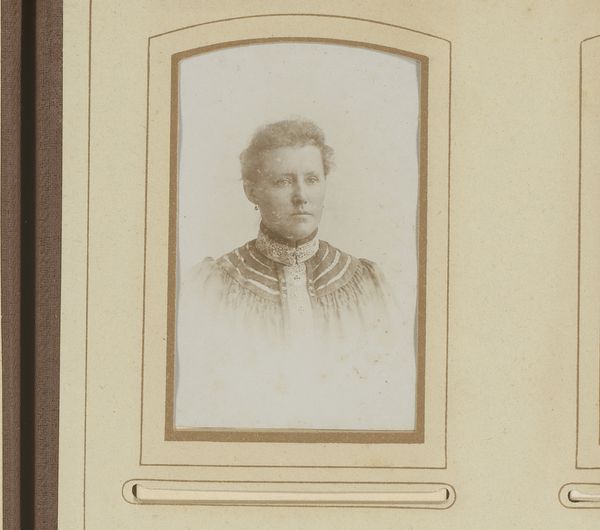
photography, gelatin-silver-print
#
portrait
#
charcoal drawing
#
photography
#
gelatin-silver-print
#
genre-painting
#
charcoal
#
realism
Dimensions: height 82 mm, width 52 mm
Copyright: Rijks Museum: Open Domain
Editor: This is *Portret van een vrouw*, or Portrait of a Woman, made between 1882 and 1886 by Louis Désiré Dupont. It’s a gelatin-silver print. There's something about the faded sepia tones that makes it feel so distant and yet incredibly intimate. What can you tell me about this piece? Curator: Looking at this gelatin-silver print, it's crucial to consider the production process. Photography at this time was becoming increasingly accessible, influencing both art and documenting social changes. The choice of gelatin-silver, replacing earlier processes, hints at Dupont's embrace of modern techniques for portraiture, a reflection of the industrial advances seeping into artistic practice. It becomes more than just a portrait, it's an artifact, an example of the increasing industrialisation of image making. What's the relationship between mass reproducibility and this singular captured subject? Editor: That's fascinating, I hadn't thought about the accessibility aspect in relation to subject. So it challenges this sense of one-off unique hand-painted portrait that perhaps came before? What might a materialist perspective highlight in terms of the woman in the picture, do you think? Curator: Absolutely. It pushes against notions of elite artistry by highlighting a mechanically reproducible image. About the woman, consider the garment construction - perhaps not haute couture but certainly demonstrating skills of tailoring and domestic labour. Even the setting, we could analyze based on the materials visible or suggested to discern class and status through visual and tactile indicators. How might we decode those choices reflected in the photograph's composition? Editor: So it’s not just what is depicted, but also *how* it's depicted. I'll definitely look at the other portraits from this era in a different light from now on. Curator: Exactly, and understanding the materials and their impact broadens our comprehension. Always consider the means of production to understand a work's place in society and history.
Comments
No comments
Be the first to comment and join the conversation on the ultimate creative platform.
